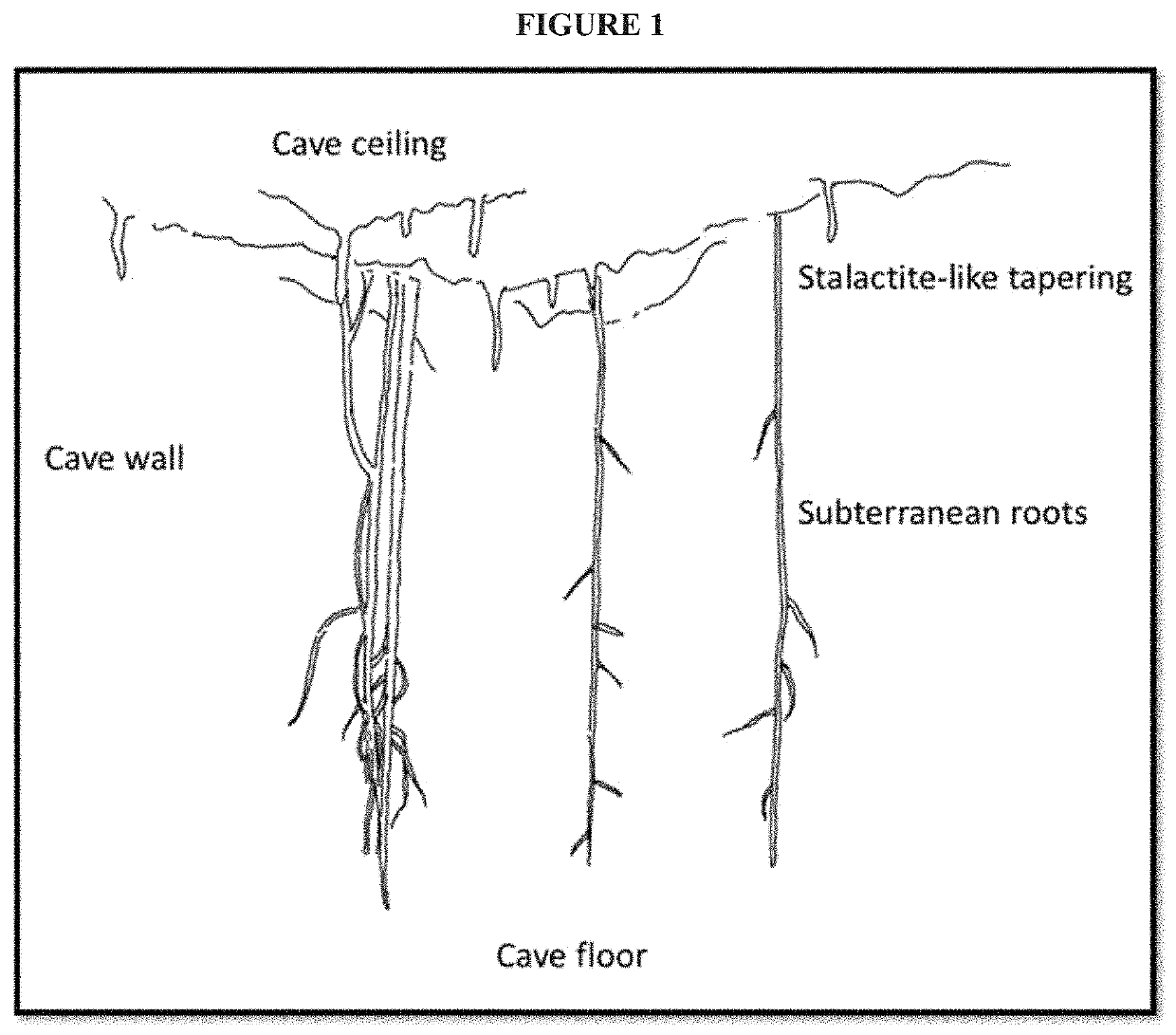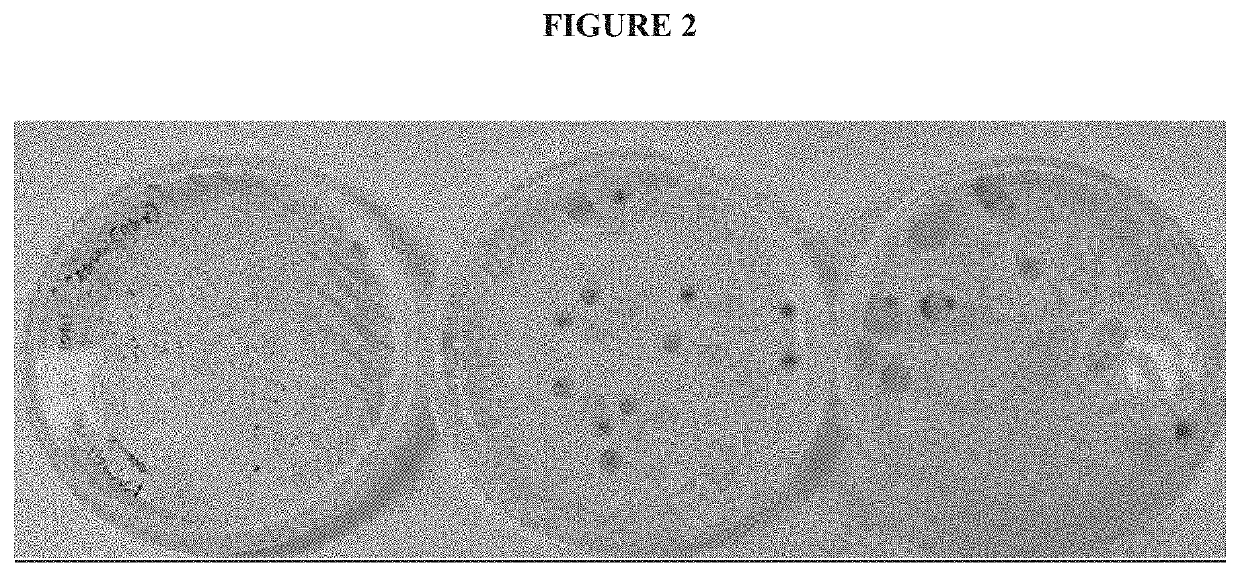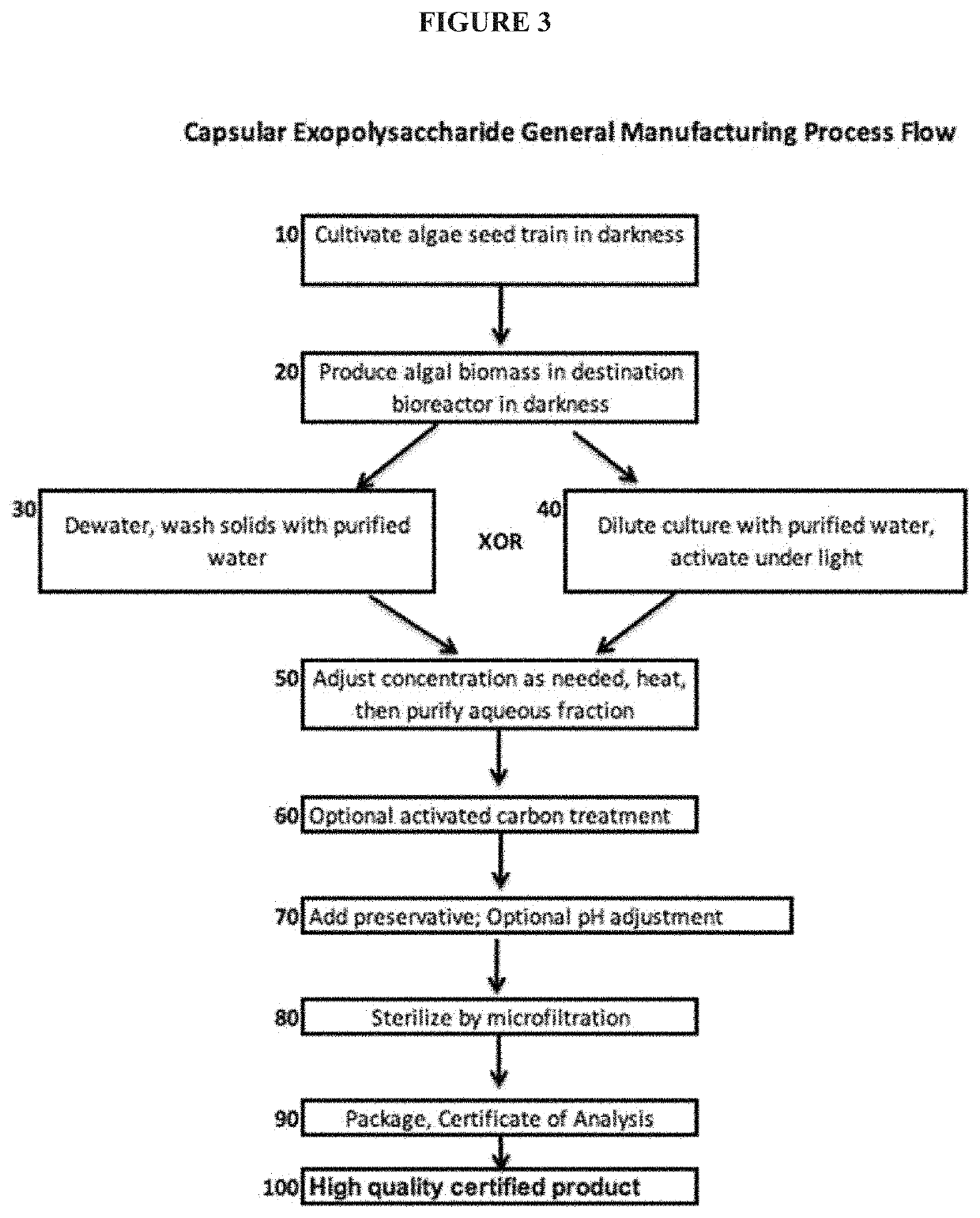Subterranean microalgae for production of microbial biomass, substances, and compositions
a technology of microbial biomass and subterranean microalgae, which is applied in the field of fermentation methods for producing biomass and bioproducts from microalgae, can solve problems such as the diminishing of microflora
- Summary
- Abstract
- Description
- Claims
- Application Information
AI Technical Summary
Benefits of technology
Problems solved by technology
Method used
Image
Examples
example 1
ment of Heterotrophic Subterranean Strains and Cultures
[0236]This example is directed to identifying heterotrophic cell types that are cultivated under conditions favorable to vegetative growth and making a product of interest using the methods of the invention. Herein described are non-limiting sample collection sites for subterranean microalgae. Samples are collected from 500-year old pseudokarst formations, from volcanic rock crevasses, and from within the entry to transition dark zones of lava tubes at about 3300 to 4000 ft elevation, 19° N and 155° W, near the east and northeast rim of the Kilauea caldera of Hawaii. Other samples are obtained from limestone karst and volcanic pseudokarst formations at about 21° N and 157° W from 300 to 1000 ft elevation within the Kona ahupua′a and Manoa 'ili division on Oahu, in the Hawaiian Islands. In complete darkness inside a cave, white deposits of calcium carbonate, calcium sulfate dihydrate, or amorphous silica are seen on the ceiling a...
example 2
phic Media Compositions and Biomass Production
[0241]This example describes cultivation of subterranean microalgae under heterotrophic conditions, including under biomimetic conditions. This is termed the “lava tube process” or “lava tube method.” An isolated alga was treated in initial culture as both an obligate species and a facultative heterotroph. Cave environment was recreated through set temperatures in consistent darkness; intermittent drip feed similar to subsurface leachate delivering organic acids and other nutrients; oxygenation (as dissolved oxygen) above some minimum; and set humidity. Liquid culture medium was preferred for ease of industrial scale-up; humidity was considered constant for a submerged culture. To determine the subterranean microalga's preferred forms of carbon (e.g., organic acids, hexoses, pentoses as might be found in a cave) and nitrogen (nitrate, ammonium, urea as might be found in a cave), stationary flask cultures were diluted 1:100 into 2 mL f / 2 ...
example 3
ty Assays and Analytical Methods
[0247]Several bioactivity assays or other analytical methods are used in characterization of algal substances. Other assays and methods are specified in further examples below.
[0248]Moisturizing Assay.
[0249]A substance is tested in different batches and concentrations, with and without an optional vehicle, in multiple combinations, to determine moisturizing properties and use rate of a concentrated product. In some cases, the vehicle is glycerin. Skin moisture is measured in a test region from the inner wrist to inner forearm with a SkinGuard 1.0 analyzer (LIUMY, Shenzen, China). Changes in moisture content over time are determined after application of substance on dry skin: 10 μl of sample is spread on the center of the test area three times for a total 30 μl applied. Moisture at the start and in 10-minute intervals to complete a 30-minute period is measured and recorded. Results are expressed as % moisture; a normal skin moisture value of the wrist ...
PUM
| Property | Measurement | Unit |
|---|---|---|
| Time | aaaaa | aaaaa |
| Time | aaaaa | aaaaa |
| Temperature | aaaaa | aaaaa |
Abstract
Description
Claims
Application Information
 Login to View More
Login to View More - R&D
- Intellectual Property
- Life Sciences
- Materials
- Tech Scout
- Unparalleled Data Quality
- Higher Quality Content
- 60% Fewer Hallucinations
Browse by: Latest US Patents, China's latest patents, Technical Efficacy Thesaurus, Application Domain, Technology Topic, Popular Technical Reports.
© 2025 PatSnap. All rights reserved.Legal|Privacy policy|Modern Slavery Act Transparency Statement|Sitemap|About US| Contact US: help@patsnap.com



